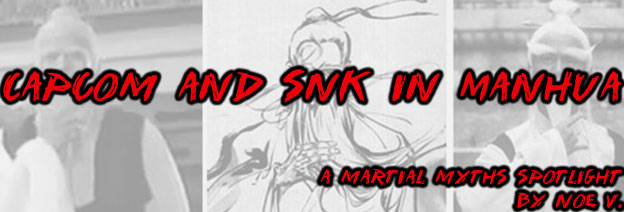
The oldest fighting game comics had been coming from Hong Kong. Many of the popular ones featuring Street Fighter or the King of Fighters series were available on this Chinese Manhua site. English adaptations of these books were rare. DrMaster Publishing (DGN) had the license and translated a number of Chinese and Korean manhua titles along with a few Japanese manga titles in the mid 2000's. However the company stopped distributing comics and seemed to simply vanish. Perhaps they were too ambitious with their titles and forgot to pay their bills? Some of the titles that they did bring over were the licensed fighting game comics from Hong Kong. Those that are interested in learning more about this style of comics should check out the following books.
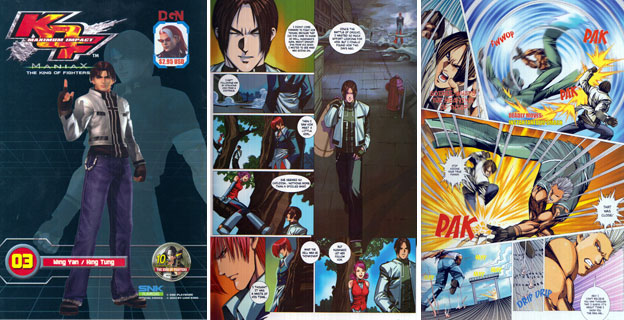
The studio released an eight-part adaptation of the King of Fighters Maximum Impact series by Wing Yan and King Tung. This was based on the 3D KOF titles that SNK had developed. The game was somewhat popular and managed to get a sequel however fans were glad that the company returned to their 2D roots on subsequent releases. The manhua was notable for several reasons. Unlike the older Jade comics published in the USA these new books used high quality paper with digital colors, making them look every bit as good as US or Japanese comics.
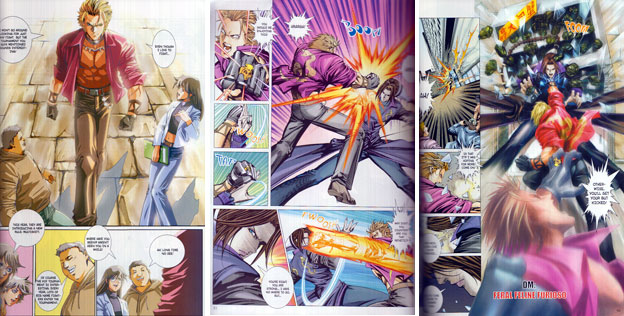
DGN also published a series based on the King of Fighters 2003, also by Wing Yan and King Tung. The series was notable because it mixed the art styles. Some of the pages were colored in a Japanese animé style, with bright highlights and light filters. Other pages looked more like traditional manhua with thin inked lines denoting shadows and shapes instead of the thick inking of US comics. Other pages were digitally painted to make them completely unlike any other title.
Street Fighter VS SNK Chaos (SVC Chaos) by Chi Wan Shum was highlighted earlier in this blog series for the number of panels swiped by the artist from other books. The title was actually a decently written attempt at bringing two completely different styles of game and character designs to readers in a convincing battle royale. This would not have been possible with some great interplay between series favorites and some fantastic painted panels by Wan Shum.
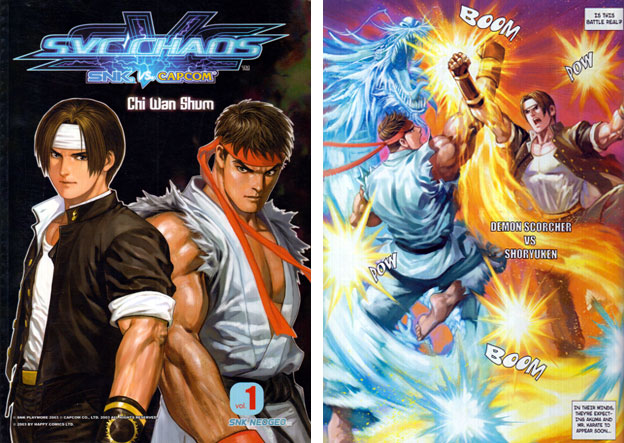
The premise for the book was a standard good versus evil in a fight to the death. Characters from Capcom and SNK universes were pulled into battle by some enigmatic young deities. The characters were scattered around a fictional city and forced to fight. It was a way for SNK to reinforce that Kyo Kusanagi was the poster boy for their fighting franchise rather than the older character Terry Bogard, who was co-developed by Street Fighter creator Takashi Nishiyama BTW. By comparison Ryu would retain his status as the most powerful fighter in the Street Fighter universe.
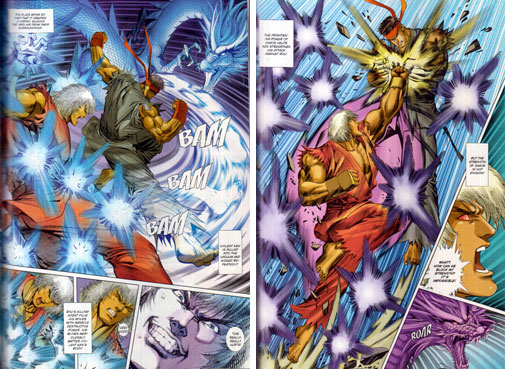
The manhua featured many different encounters between characters. In some cases there were variations of the main characters doing battle, like Evil Ryu versus Violent Ken. The series dealt with a great number of match-ups that only a true fan of both universes could have presented.
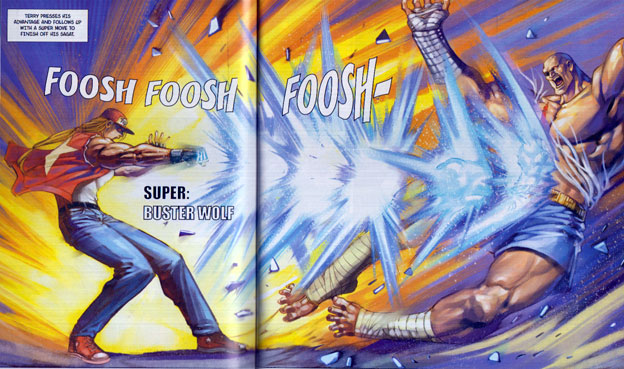
Terry versus Sagat? It was unlikely that an encounter in US comics due to licensing restrictions however the agreement that both SNK and Capcom had agreed with in Hong Kong must have been less costly to publishers.
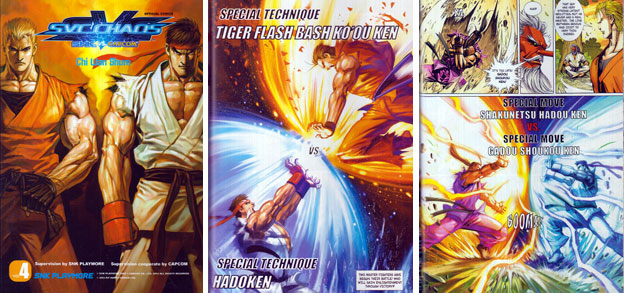
The series had some eye-catching painted panels.
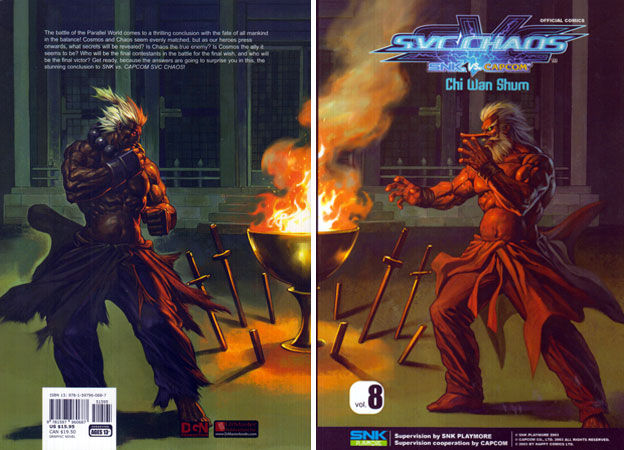
The main villains in the series were Gouki and Mr. Karate, the respective fighting bosses of both universes.
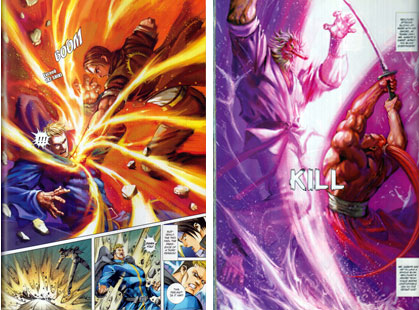
The series was not all Capcom vs Capcom battles though. The SNK encounters were equally memorable. Chi Wan Shum tried to cram in every possible fanboy battle into the series. How about Ken versus Geese Howard, or Gouki vs Vega? Who were the most powerful fighters after all?
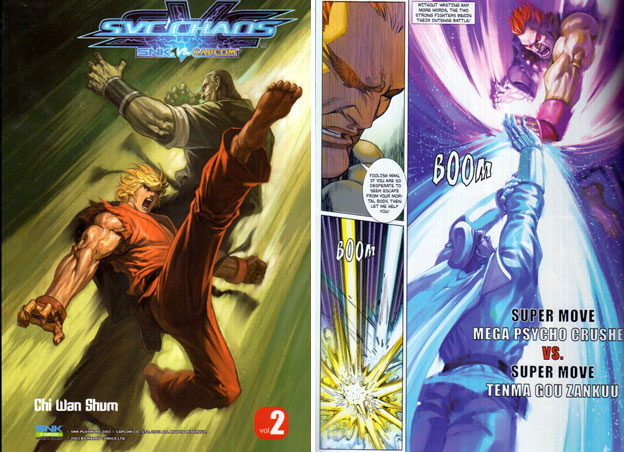
Fighting game collectors owe it to themselves to track down these books and see how the manhua differs from other comic formats. The ways in which manhua predated the Street Fighter myth was almost eerie. This relationship will be explored in the next entry. As always if you would like to sponsor me please visit my Patreon page and consider donating each month, even as little as $1 would help make better blogs and even podcasts!

No comments:
Post a Comment